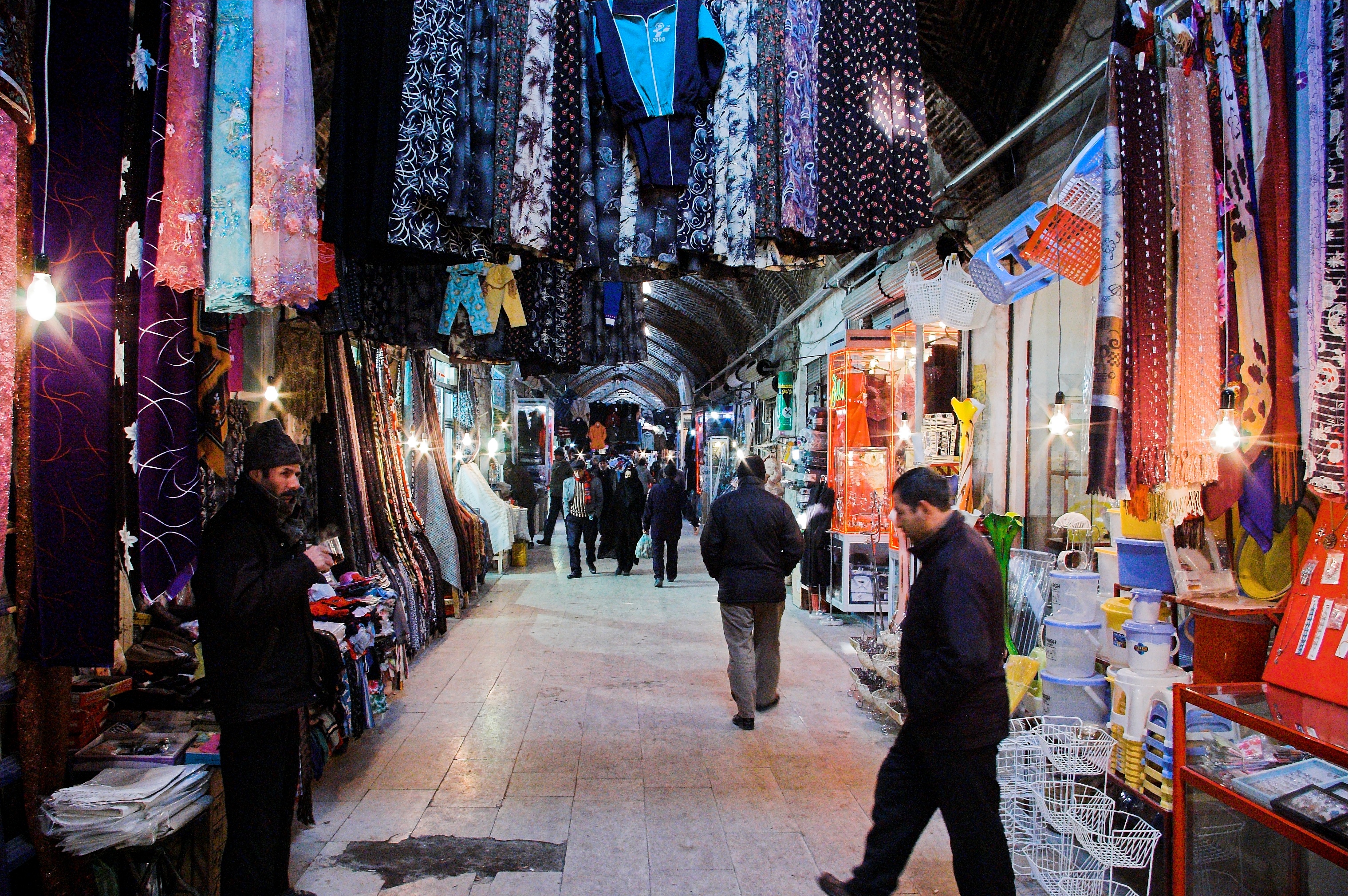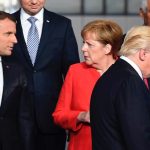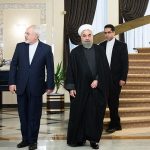by Esfandyar Batmanghelidj
Anticipation has been building among international investors and business leaders as Iran and the P5+1 edge closer to a nuclear deal. Each week another trade delegation—whether American, or Swiss, or German—makes its way to Tehran to scope out opportunities.
I have argued before that Iran’s private sector business leaders need to play a bigger role in the country’s reengagement of the international community. Indeed, a prospective détente is dependent not only on the normalization of political ties between Iran and the West, but also on the realignment of economic ties. In this sense, détente is a question of both politics and economics. It is a matter of political economy.
In order to envision the future role of Iran’s private sector, it helps to look to the past and the historical role of the bazaar, once the center of Iranian political economy.
The Centrality of the Bazaar
We commonly think of the bazaar as a pre-modern marketplace of dark and winding corridors, full of carpets and other exotica. But the bazaar was in fact the economic heart of Iran until the end of the 20th century. It was even more important perhaps than the country’s oil refineries. In the 1970s, the economic might of the bazaar was so significant that the marketplace controlled “as much as half of the country’s handicraft production, two-thirds of its retail trade, and three-quarters of its wholesale trade.” Beyond trade, the bazaar was also a vitally important creditor. As late as the 1960s, “the bazaars in Iran were estimated to loan as much as all the commercial banks put together.” And even after a decade of expansion of modern banks, “in 1975 the bazaar was estimated to control 20 percent of the official market volume, or 3 billion in foreign exchange and 2.1 billion in loans outstanding.”
In this way, the merchants of the bazaar, known as bazaaris, constituted a powerful network of economic actors. Acting as a social class unto themselves, the bazaaris anchored Iranian civil society, granting immense political power to the Iranian people by supporting mass mobilizations such as the 1905 Constitutional Revolution and the 1953 movement to nationalize the Iranian oil industry.
In 1979, decades of political turmoil culminated in the Islamic Revolution, in which a broad coalition of Islamic and leftist political movements collaborated to oust the Shah. In the years leading up to the revolution, the bazaaris had played a critical role.
The Shah, with his drive for modernization, despised the bazaaris, whom he considered remnants of Iran’s backwards past, ridiculing them for their “worm-ridden shops.” Annoyed by the domination of the bazaar in the retail and banking sectors, the Shah sought to render them obsolete, writing in his memoirs: “’I could not stop building supermarkets. I wanted a modern country.”
The bazaaris felt threatened by the trajectory of economic planning and saw its shortcomings. Sitting within an institution visited by both the lower and upper classes, the bazaaris understood the consequences of growing inequality all too well.
The bazaars’ broad support of the Islamic Revolution, and Ayatollah Ruhollah Khomeini in particular, made all the difference for the durability of the revolutionary movement. In numerous instances, bazaaris across the country mobilized funds and people to ensure that different groups could sustain their protests. In 1977, for instance, bazaaris stepped in to cover professor salaries at Aryamehr University so that protestors could endure a suspension of pay.
Ultimately, the revolution succeeded in establishing the Islamic Republic, with Khomeini as its Supreme Leader. When Khomeini began consolidating power, he quickly sought to neutralize the bazaar, worried that a deteriorating economy would pit the bazaaris against his nascent rule. The new regime rewarded the members of the Islamic Coalition Association (ICA), a small segment of bazaaris, who had “financed and organized many political rallies and events” by making them “part of the new ruling elite.”
By cleverly creating ties of allegiance between the bazaar and the new government, Khomeini sought to eliminate the bazaar as a site for independent political contention. It was no longer an institution of the private sector. Indeed, even today, those bazaaris with ties to the political establishment are referred to as dawlati, meaning “of the government.”
Decline of the Bazaar
Since 1979, weakened by the policies of the Islamic Republic, the bazaar has ceased to be the locus of power in Iran’s political economy. Consider that in the 2009 Green Movement, the bazaar played hardly any role, despite dissatisfaction with the government among many merchants. This was the first time in over a century that the bazaar was not active in a mass mobilization.
Because of the bazaar’s decline in the years following the revolution, and because of the simplistic portrait of Iranian political economy as that of a rentier state defined by oil, scholars and analysts alike have largely ignored the critical role of the bazaar. Only a few works, such as Arang Keshavarzian’s excellent Bazaar and State in Iran and recent scholarship by Kevan Harris, give the institution its due attention.
With the help of this scholarship, it is possible to identify a few key qualities of the bazaar and its merchants. First of all, the bazaaris were private actors, but with strong communal ties and a sense of civic responsibility. Their political leanings were moderated because their fortunes were tied to the economic wellbeing of the wider Iranian public. And they were willing to mobilize resources to support political actors whom they felt represented the interests of the common man.
The emergence of institutional actors with these three qualities could have a profound impact on Iran in a post-sanctions environment and on the road to political reform. Unfortunately, since the weakening of the bazaar, such qualities have been largely absent in any institution of Iranian civil or commercial life. In the current environment, those commercial entities with the means to mobilize resources in politics are neither private, nor sufficiently moderate, nor beholden to a sense of civic duty. They are usually part of the country’s military-industrial complex, serving first-and-foremost their dawlati members.
Therefore, if Iranian political economy is going to once again find its fundamental institution, one that can empower civil society and bolster the middle class, new stakeholders need to step up.
Iran’s Future Political Economy
The most likely candidates are the firms of Iranian private enterprise, especially those that are publically traded and are therefore committed to a wide range of shareholders in addition to their employees and customers. Every member of civil society takes on economic roles as a customer, employee, or shareholder. If these stakeholders can be economically engaged, then Iranian civil society can once again find its capacity to mobilize and make political claims bolstered by economic clout.
In this sense, the future of Iranian political economy requires that the companies of the bourse, Iran’s stock exchange, serve the role once played by the merchants of the bazaar. We might call this the bazaar-to-bourse theory.
This is not to say that business leaders should get involved in politics directly. But when companies seek to provide goods, services, and employment within an economy, they begin to constitute what Keshavarzian calls “socially embedded networks,” which give economic systems political meaning through the everyday transactions of people. If these transactions can occur outside state-controlled channels, the Iranian people will have a better chance of holding their government accountable to promises of reform. Encouragingly, current Iranian President Hassan Rouhani supports such a rebalancing of Iran’s political economy.
But private businesses have a long way to go. Misguided sanctions have significantly weakened their position in the economy. Shayerah Illias, a researcher at the Congressional Research Service, has noted how sanctions have only contributed to the marginalization of private enterprise begun under Khomeini, awarding more control to state-owned companies and their affiliates. Squeezed by inflation, unemployment, and without an economic anchor in the form of private businesses, Iranian civil society has suffered the most under sanctions.
It follows that, if the United States and the rest of the P5+1 are really committed to a durable political agreement, they ought to properly plan for a realignment of political economy in a post-sanctions environment. Pragmatically speaking, foreign investment cannot be an afterthought of a nuclear deal. Clear and consistent sanctions relief needs to be guaranteed early so that Iran’s private sector can get to work fast. Securing investment and boosting trade will help put businesses in a position to empower their customers, employees, and shareholders. We would expect a reduction in unemployment, lower inflation, greater purchasing power, and altogether more influence for the average Iranian in the composition of the country’s political economy. This influence would help secure the deal against hardliner opposition.
On this basis, Iran’s private sector business leaders must aspire not only to the power and influence of the historical bazaar, but also to its sense of community and common purpose. In the bazaar, the “steady accretion of interactions blurred the divide between potentially distinct spheres of life—kinship, friendship, partnership, and commerce.”
When we think about business leaders, it is easy to dismiss them as out-of-touch “fat cats” and to expect little from a capitalist institution like a stock market. But Iran’s business leaders, like the bazaari merchants before them, have the ability to facilitate constructive social change. And Iran is one of the few countries where ideologies of politics and economics find truly syncretic forms.
So far, the signs are encouraging that the men and women of Iran’s private sector are the kind of global leaders we would want to see empowered. To leave them out of the picture of détente would be a mistake. It would also expose an all-too-typical lack of historical awareness on the part of Western policymakers.
“Corporate citizenship” can be more than a buzzword if it is woven it into the fabric of Iranian business culture. The bazaar provides the model to emulate.






The sanctions have been a sort of “tough love” which has placed increased emphasis on domestic manufacturing and lessened the influence of the bazaaris who were involved in imports of goods and their sale at marked-up prices. Hopefully that will continue. An economy based on merchants and money-handling (as the U.S. has trended) is not good.